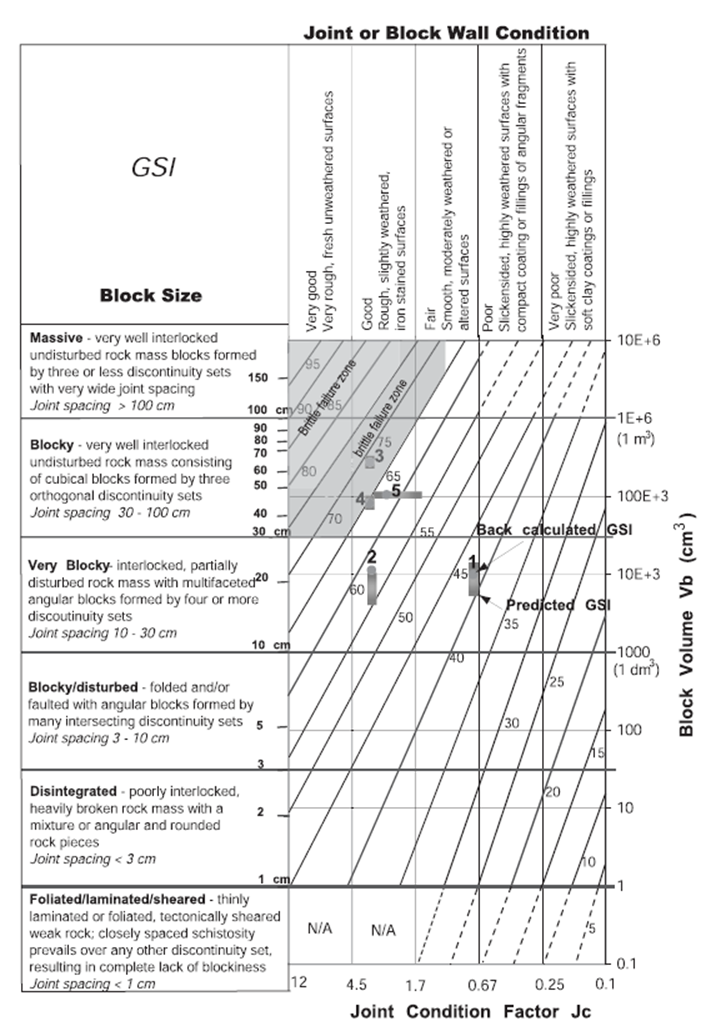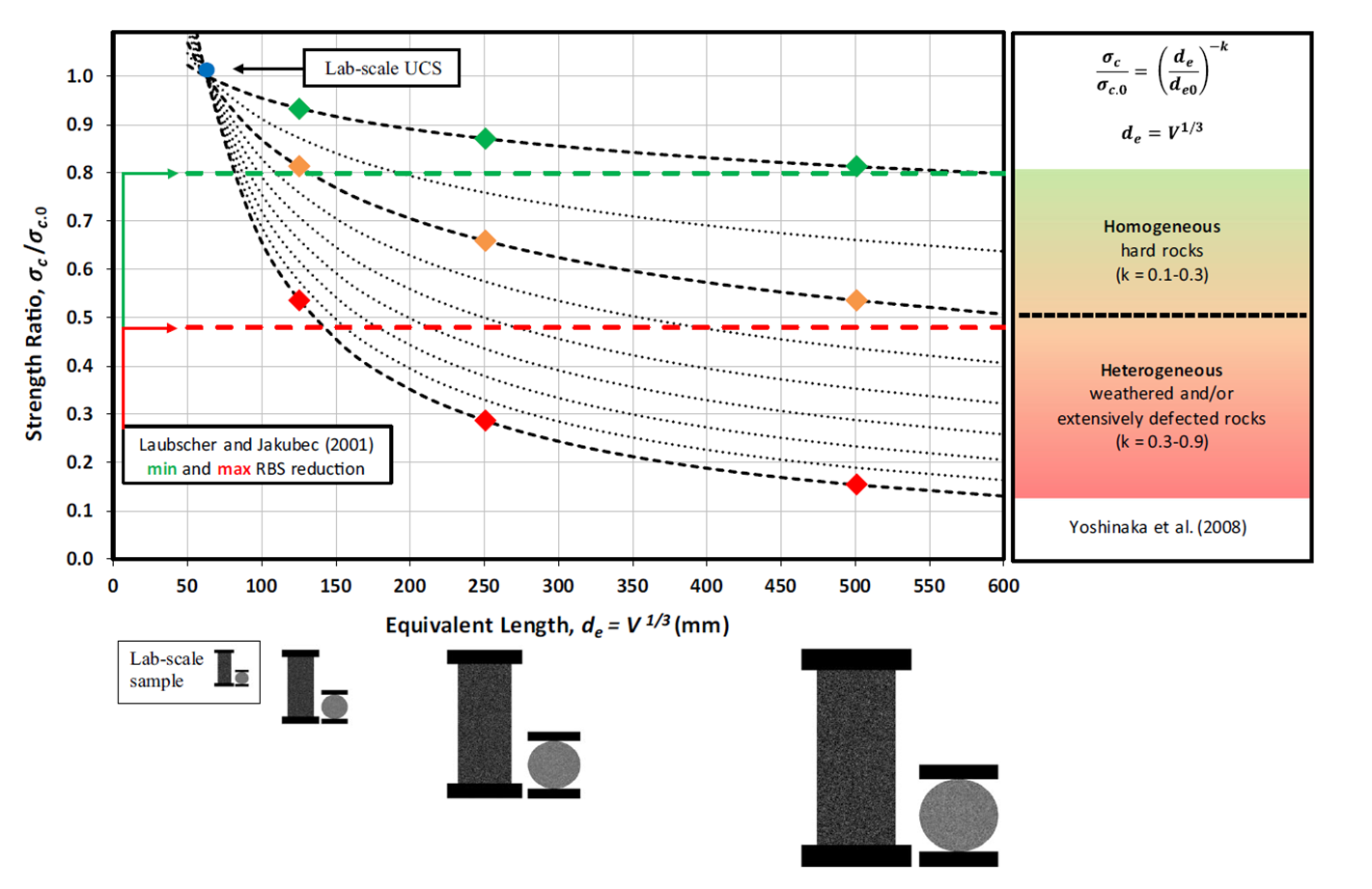In the IUCM, the Sigci property represents the unconfined compressive strength of the intact rock blocks bounded by rock mass discontinuities. In rock mass conditions with higher densities of discontinuities (lower GSI values), the compressive strength of the intact rock for the scale of laboratory samples can be used to assign the Sigci property.
This is because for these rock masses the size of the intact blocks, bounded by the discontinuities, is close enough to the laboratory samples that the effect of increasing sample size on the strength of the intact rock can be neglected. However, in rock mass conditions with lower densities of discontinuities (i.e. GSI greater than 65), the effect of increasing sample size on the strength of the intact rock blocks should be considerably more pronounced.
Based on previous back-analysis and calibration studies completed for underground excavations using the IUCM, the following rule of thumb is recommended when assigning the Sigci property without any calibration data available:
• For rock masses with GSI values smaller than 65, use the unconfined laboratory tests to assign the UCS property.
• For rock masses with GSI values greater than 65, reduce the strength obtained from the unconfined laboratory tests according to approximates relationship provided by Yoshinaka et al. (2008) and using the approximate block sizes associated with each GSI value as recommended by Cai et al. (2004).
Step 1 - Find the approximate block sizes using GSI and Joint condition from the chart below

Step 2 - Scale Sigci from laboratory results according to block size estimated in Step 1

References: